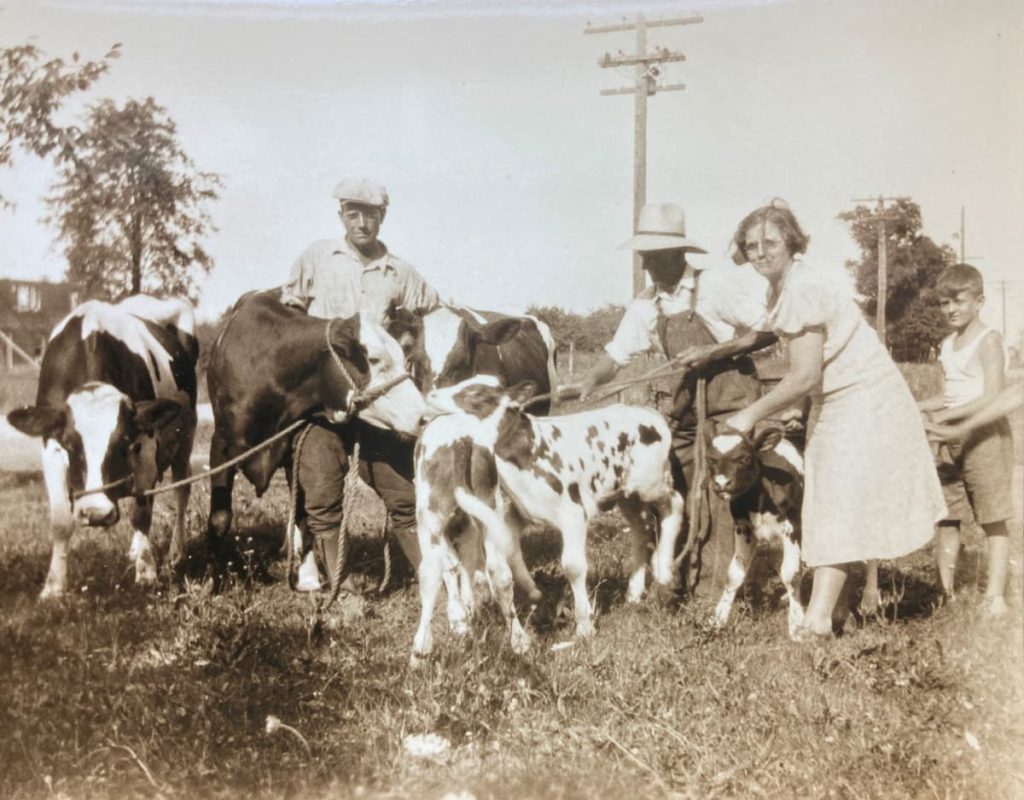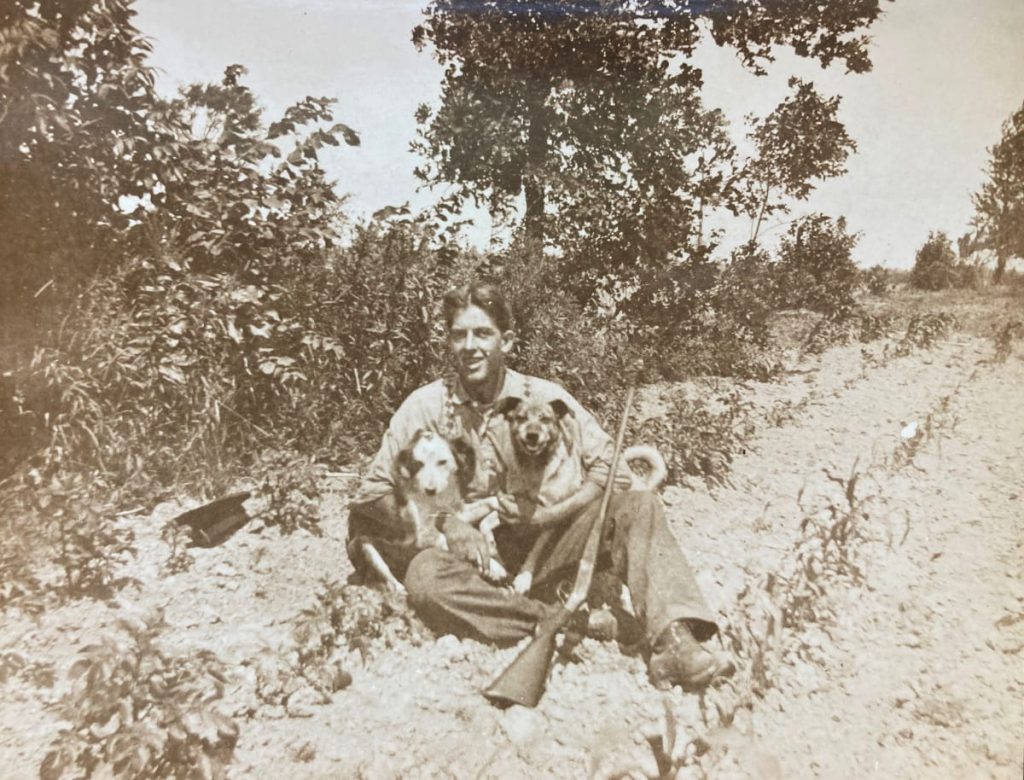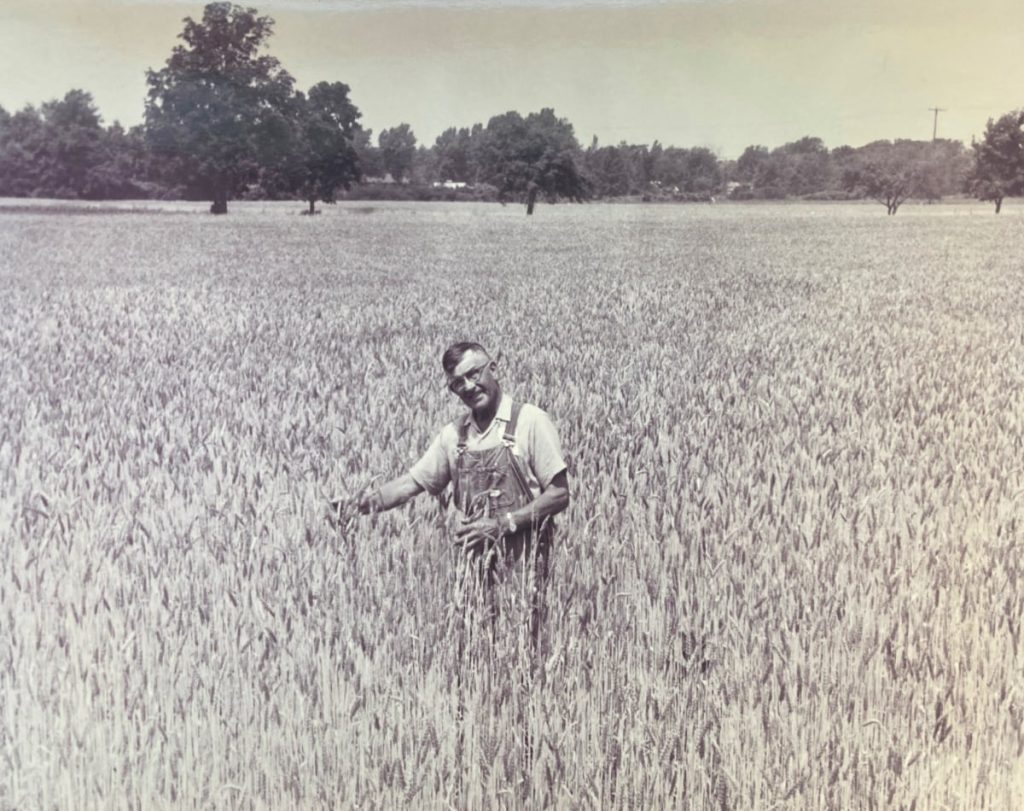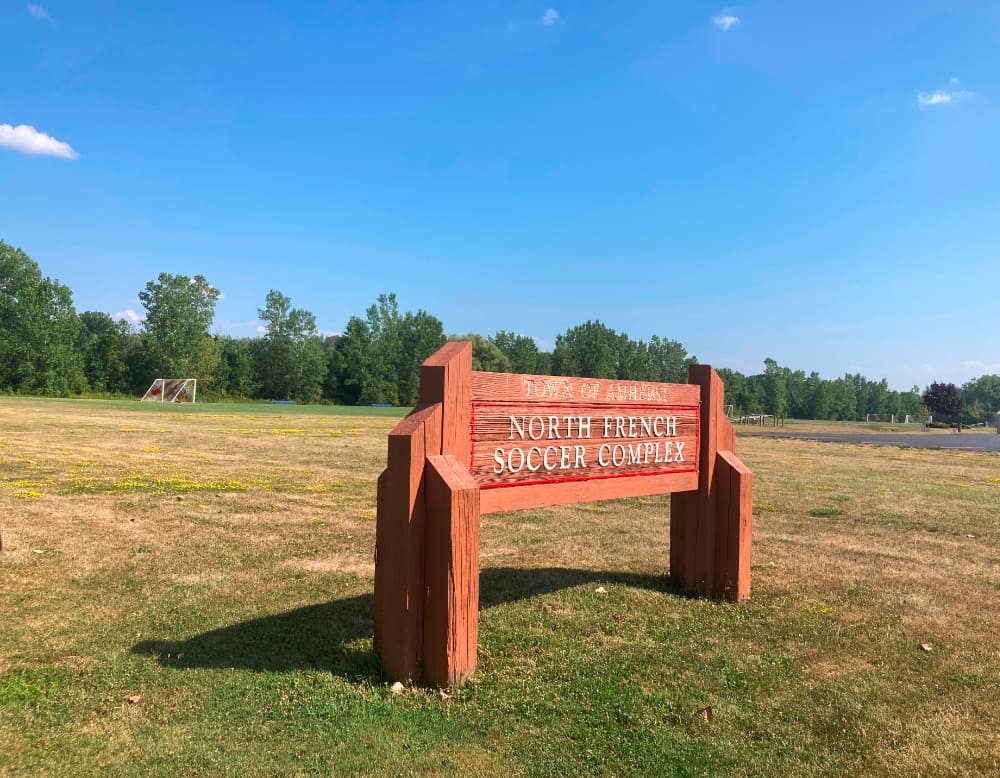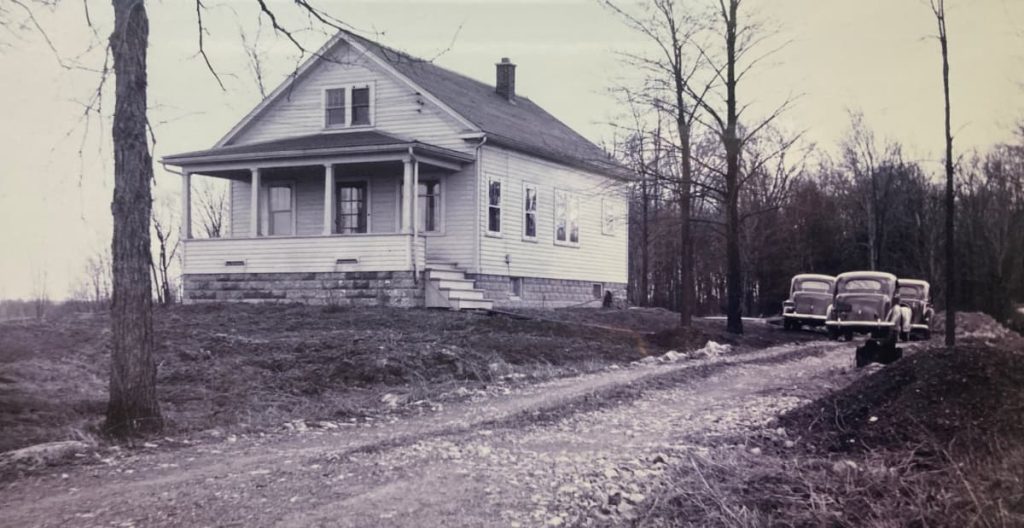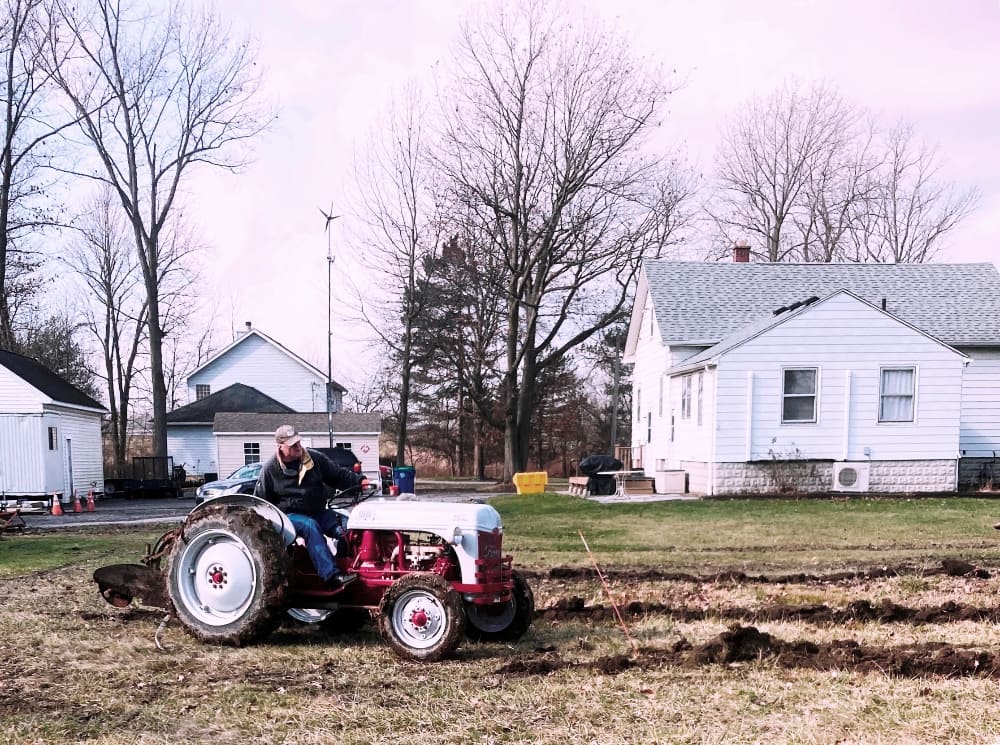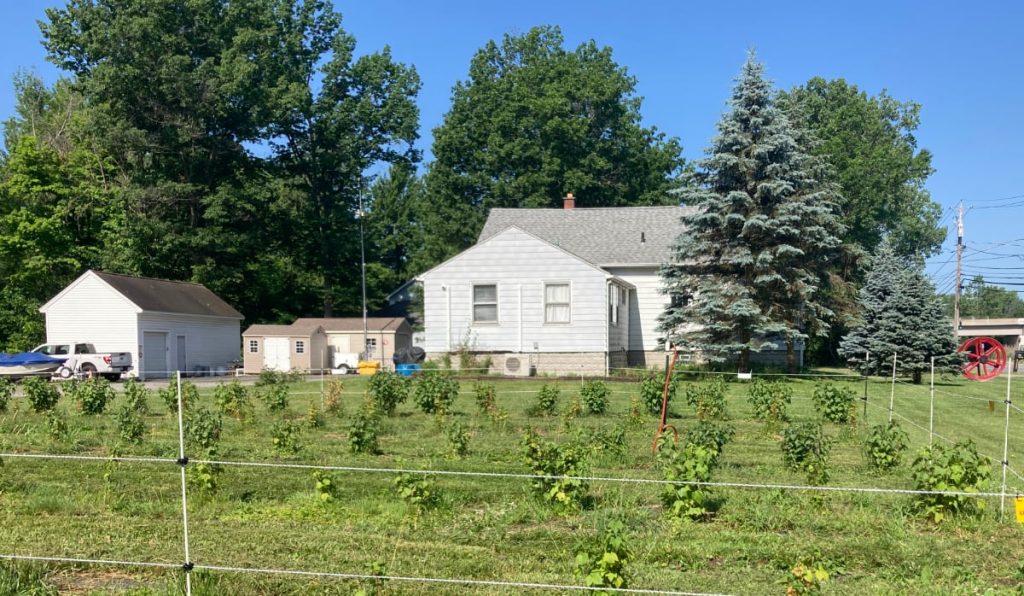patch
/paCH/
… a small piece of ground, especially one used for gardening.
When my Great Grandfather Gottfried Dettmer passed away in Getzville, New York in 1911, he was called a pioneer by the local newspaper, for the work he did in the area the previous 40 years. The draining of the swampy land in the northern half of Amherst New York (the area surrounding Getzville) was largely done by German immigrants who cleared the area and then farmed the newly reclaimed, rich, soil. Ironically by 1909 the road our berry patch is on today was changed from “Muck Road” to North French Road. How the road was named was left to the politicians – as the German and Polish farmers and settlers had little to do with the powers-that-be at the time. But as was said back then, “French?”
The Dettmer family in the early twentieth century had enough land to operate both a dairy farm and a substantial (for its time) crop business. During two World Wars and the great depression, the farm was nearly self-sufficient, and what they could not produce, they traded for with other farm families nearby. There was a true farming community back then.
The sons and daughters of Gottfried Dettmer further developed lands he cleared and started buying up other properties near the original farmstead. In 1935, Gottfried’s son, Henry Dettmer, purchased the property at 1801 North French Road from his brother George. Before Henry would start his building his own house in 1936, he planted an apple and pear orchard, and made his own berry patch featuring new varieties of raspberries, and some blackberries. Ironically, the popularity of the new North French Road, which by 1939 cut across the entire town of Amherst connecting North Tonawanda to Clarence and Akron New York, meant that warning or posted signs against agricultural theft were soon needed.
The sign below was actually posted near our current day currant patch and dates from circa 1940 – signed by Henry himself!
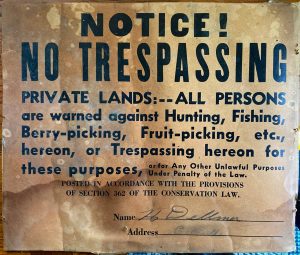
By the late 1950s farming in New York State became over-regulated and political. In the Town of Amherst, tax income from residential housing was far more appealing than farming to the politicians of the time, and a push for new highways, thruways, and residential development was all the rave. The Dettmer dairy operations ended in the 1950s, but the hay/straw and row crop business continued into the late1960s.
In the 1970s the Dettmer original homestead farm property at 1727 N French road was acquired for the development of the NY I-990 thruway and for the planned Amherst Police Station Headquarters, including a jail. It looked good on a map, but sadly, after the purchase was completed, the bureaucrats realized they forgot to remember that Great Grandpa drained the swamp to make that land for the farm. Once test drilling began for road building and foundations, it was discovered that the muck soil ran so deep that they couldn’t set piers, and there were far too many underground natural springs to ever build upon. Dettmer ancestors likely would have howled at this kind of thinking – but they would be joyous that, instead of a highway or jail being built, one of Western New York’s largest soccer fields and recreational park now sits on the homestead site - just down the road from our berry farm. Goal!
Thankfully, the farmstead of Henry Dettmer (1897-1953) at 1801 North French Road survived most impacts of the I-990 development. And for Henry’s son Robert (1939- 2007), and his son grandson, Mark, the property continued serving the historical family farming desires for three generations.
The 2006 “October Surprise” storm could have been the end of Dettmer farming related activities. On October 13, 2006, more than 23 inches of snow fell on fully leafed trees. Power lines fell with the trees, and the entire area was tossed into power outages that lasted over a week. At the 1801 homestead, Henry’s entire apple and pear orchard, which had been cared for by Robert since 1954, crashed to the ground; not one tree could be saved. Robert passed away a year later. In the following decade, Mark would slowly clear the trees and the stumps with a goal of finding something new to do in the dirt.
In 2023, while in Germany, Mark found what looked to be the ideal plant to occupy the former orchard land at 1801 North French Road: black currants. A deep and intensive research project followed, culminating in the sourcing and acquisition of six European varieties of black currants, plus a red currant variety for fun. From the time he told his wife Lea in November of 2023, to the planting of 135 bare root plants, only four months elapsed. This included plowing and disking in February and the actual planting in March – a bold event in Western New York winter, but accomplished nevertheless.
With such a long Dettmer history of hard work, adapting to changing times, technology, and lifestyles, Lea had easy work naming the website ‘The Currant Sitch.’ She’s learned that Dettmer dna includes starting something new just when things get settled. There’s more about our currant patch in another section of the website - but since friends and neighbors like to share memories and stories of the Dettmer farms on North French Road, we’ve taken the time to create a historical farm photo gallery below. We hope you find the history educational and fun. God Bless.
For a copy of the Historical Dettmer Family Farm Prayer in English Click Here
